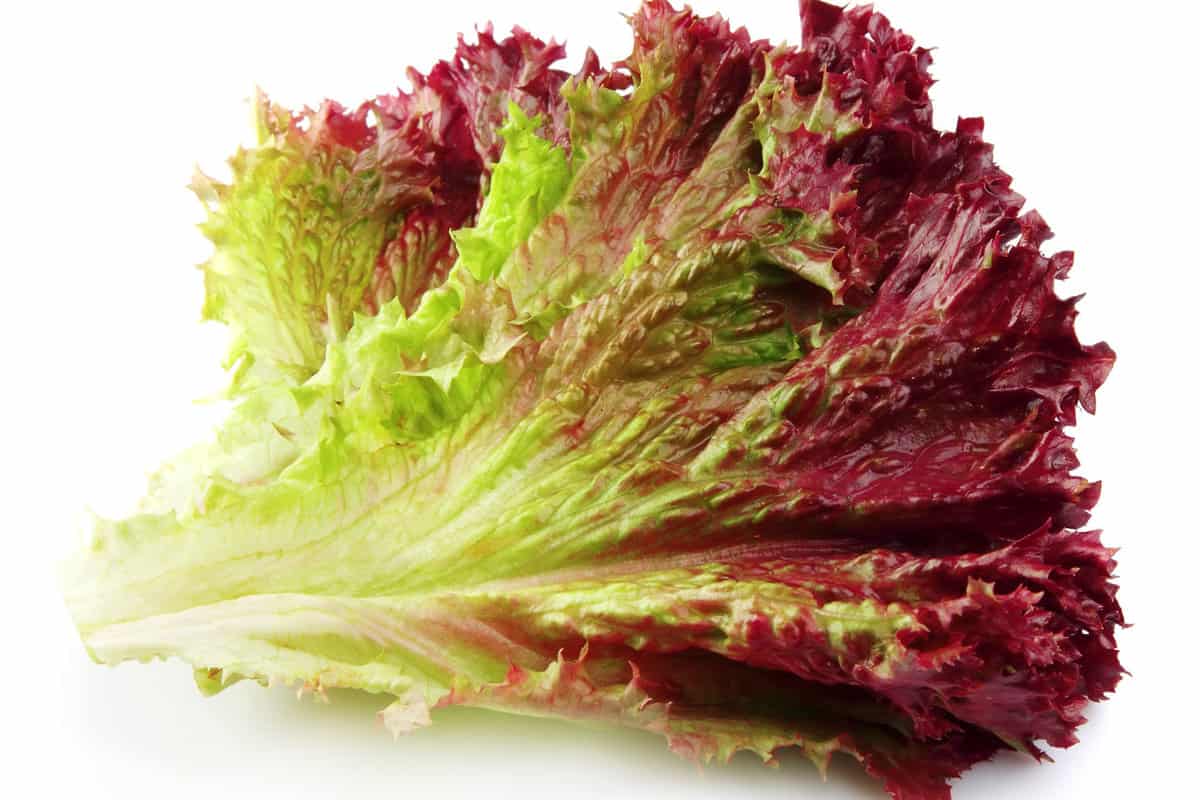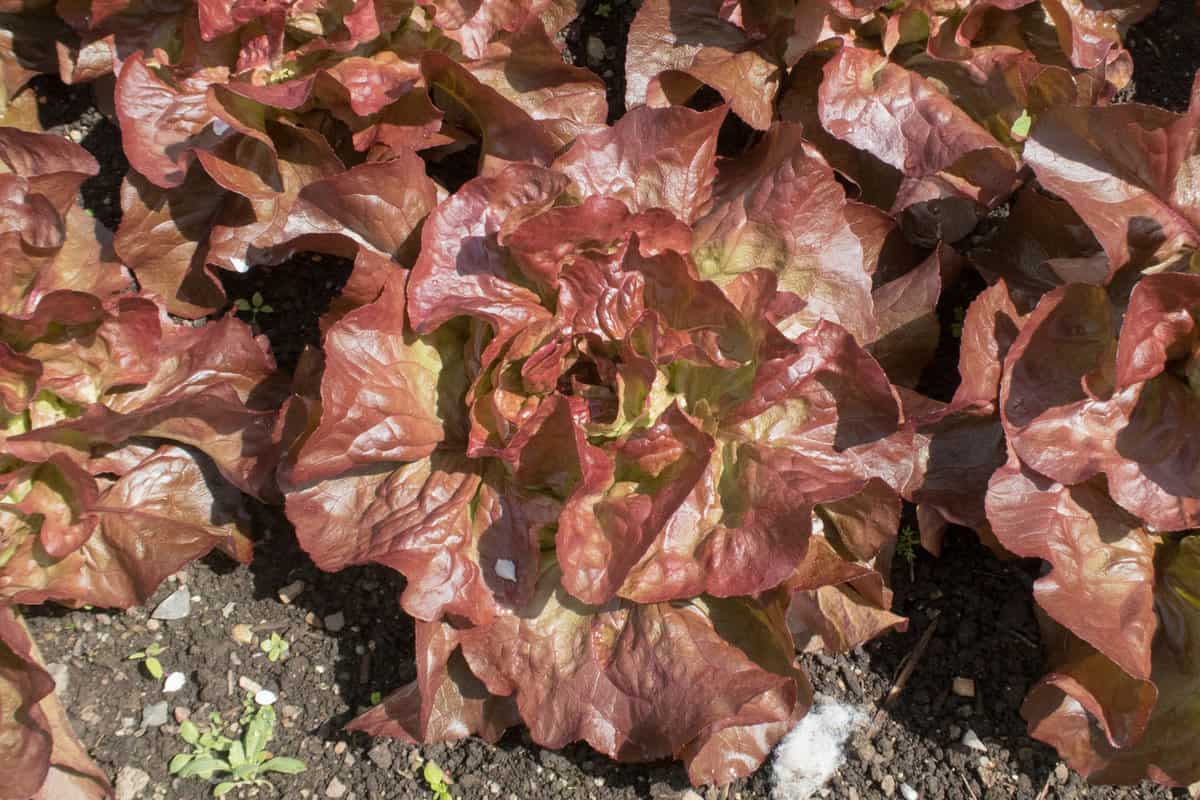Are you tired of opening your fridge, only to find your once fresh and green lettuce has turned into an unappetizing shade of red?
But have you ever wondered what causes this color change? Is it still safe to eat?
In this article, we will explore the possible reasons behind this phenomenon, from oxidation to exposure to ethylene gas.
Let's discuss the mystery of why your lettuce turns red.
Why Is My Lettuce Red?

Lettuce is a popular salad green that is known for its crisp texture and refreshing taste.
In this section, we will explore the reasons why lettuce may turn red and whether it is still safe to consume.
Exposure to Oxygen
One of the most common reasons why lettuce turns red is due to prolonged exposure to oxygen.
This redness is not a naturally occurring pigment but rather a result of the lettuce's cell walls breaking down when exposed to oxygen.
This breakdown can cause the lettuce to turn a reddish hue, which is usually a sign of deterioration.
Ethylene Gas Exposure
Lettuce can also turn red when exposed to ethylene gas, which is typically emitted by ripening fruits and vegetables.
When lettuce is stored alongside these items, it can absorb the gas and turn red as a result.
This is because ethylene gas can trigger the release of an enzyme that causes the lettuce to turn red.
Oxidation
Another reason why lettuce may turn red is due to oxidation.
All fruits and vegetables deteriorate over time due to oxidation, and lettuce is no exception. If your lettuce has started to turn red after it has been harvested while in storage, it is likely due to oxidation.
While red lettuce may not look as appetizing as its green counterpart, it is generally safe to eat.
However, if you notice any signs of spoilage, such as a slimy texture or a foul odor, it is best to discard the lettuce to avoid the risk of foodborne illness.
Is Red Lettuce Safe to Eat?

Many people wonder if red lettuce is safe to eat. The good news is that red lettuce is safe to eat, even if it has turned red.
The reddish-brown stuff that appears on lettuce, often near the root, is due to excess moisture during the storage process.
While it may look unappetizing, it is safe to eat.
In most cases, red lettuce is just as nutritious as green lettuce. Lettuce turns red when oxygen gets into the capillaries of the leaves as they are cut from the plant.
This causes oxidation, but it does not affect the nutritional value of the lettuce.
Red lettuce is a beautiful and nutritious addition to any salad.
While it may turn red due to prolonged exposure to oxygen or ethylene gas, it is still safe to eat and just as nutritious as green lettuce.
Types of Red Lettuce
While some lettuce may turn red due to the above reasons, some varieties naturally grow red leaves. Let's discuss.
There are three main types of red lettuce: Red Leaf Lettuce, Red Romaine Lettuce, and Red Butterhead Lettuce.
Red Leaf Lettuce

Red Leaf Lettuce, as the name suggests, has red-tinted leaves that are shaped like a leaf.
This type of lettuce is often used in salads and sandwiches, and it has a slightly sweet taste.
Red Leaf Lettuce is high in vitamins A and K, as well as antioxidants.
Red Romaine Lettuce

Red Romaine Lettuce has a similar shape to traditional Romaine Lettuce, but its leaves are tinged with red.
This type of lettuce has a slightly bitter taste and is often used in Caesar salads.
Red Romaine Lettuce is high in vitamins A and C, as well as iron and potassium.
Red Butterhead Lettuce

Red Butterhead Lettuce is a type of lettuce that has a soft, buttery texture and a mild flavor. Its leaves are tinged with red, and it is often used in salads and sandwiches.
Red Butterhead Lettuce is high in vitamins A and C, as well as calcium and iron.
Overall, red lettuce is a healthy and delicious addition to any meal.
Whether you prefer Red Leaf, Red Romaine, or Red Butterhead Lettuce, you can't go wrong with this colorful and nutritious vegetable.
Growing Red Lettuce at Home

Red lettuce is a type of leaf lettuce with a red or purple hue that is caused by anthocyanin pigments in the leaves.
To grow red lettuce at home, follow the same steps as growing green lettuce. Start by selecting a location with full sun or partial shade and well-draining soil.
Red lettuce prefers cooler temperatures, so it is best to plant it in the spring or fall.
You can sow red lettuce seeds directly into the soil or start them indoors and transplant them later.
Sow the seeds about 1/4 inch deep and 1 inch apart, and water them regularly to keep the soil moist.
Once the seedlings have sprouted, thin them to about 6 inches apart to give them room to grow.
Red lettuce can be harvested when the leaves are about 4-6 inches long. You can either harvest the entire plant or just pick the outer leaves as needed.
For more tips about harvesting lettuce: How Is Lettuce Harvested? A Quick Guide To The Process
Red lettuce can be stored in the refrigerator for up to a week, but it is best to use it fresh for the most flavor and nutrition.
With a little bit of care and attention, you can enjoy a delicious and nutritious crop of red lettuce in no time.
Common Mistakes While Growing Red Lettuce

Growing red lettuce can be a fun and rewarding experience, but it's important to avoid some common mistakes that can lead to disappointing results.
Here are a few things to keep in mind when growing red lettuce:
Planting at the Wrong Time
One of the most common mistakes that gardeners make when growing red lettuce is planting at the wrong time.
Red lettuce is a cool weather crop, and it grows best in temperatures between 60 and 65 degrees Fahrenheit.
If you plant red lettuce when it's too hot or too cold, it may not grow properly or may bolt quickly.
Overwatering

Overwatering is another common mistake that can lead to problems when growing red lettuce. While lettuce needs plenty of water to grow, it's important not to overdo it.
Overwatering can lead to root rot and other problems that can damage your plants.
Not Enough Sunlight
Red lettuce needs plenty of sunlight to grow properly. If your plants aren't getting enough sunlight, they may not grow as quickly or may produce smaller leaves.
Make sure to plant your red lettuce in a spot that gets plenty of direct sunlight throughout the day.
Poor Soil Quality

Finally, poor soil quality can also lead to problems when growing red lettuce. Red lettuce needs well-draining soil that is rich in organic matter.
If your soil is too compacted or doesn't have enough nutrients, your plants may not grow properly.
Consider adding compost or other organic matter to your soil to improve its quality.
Read more: Waste Into Wealth: 25 Reasons To Start Composting Now
By avoiding these common mistakes, you can increase your chances of growing healthy and delicious red lettuce.
For more tips about growing lettuce: What To Plant Next To Lettuce? 10 Fantastic Friends For Your Lettuce Greens
The Wrap-Up
So the next time you find red lettuce in your bag, don't be alarmed.
Embrace the vibrant color and enjoy the unique flavor and nutritional benefits it has to offer.
Whether you're a fan of traditional green lettuce or enjoy experimenting with different varieties, red lettuce adds a touch of excitement and variety to your meals.
